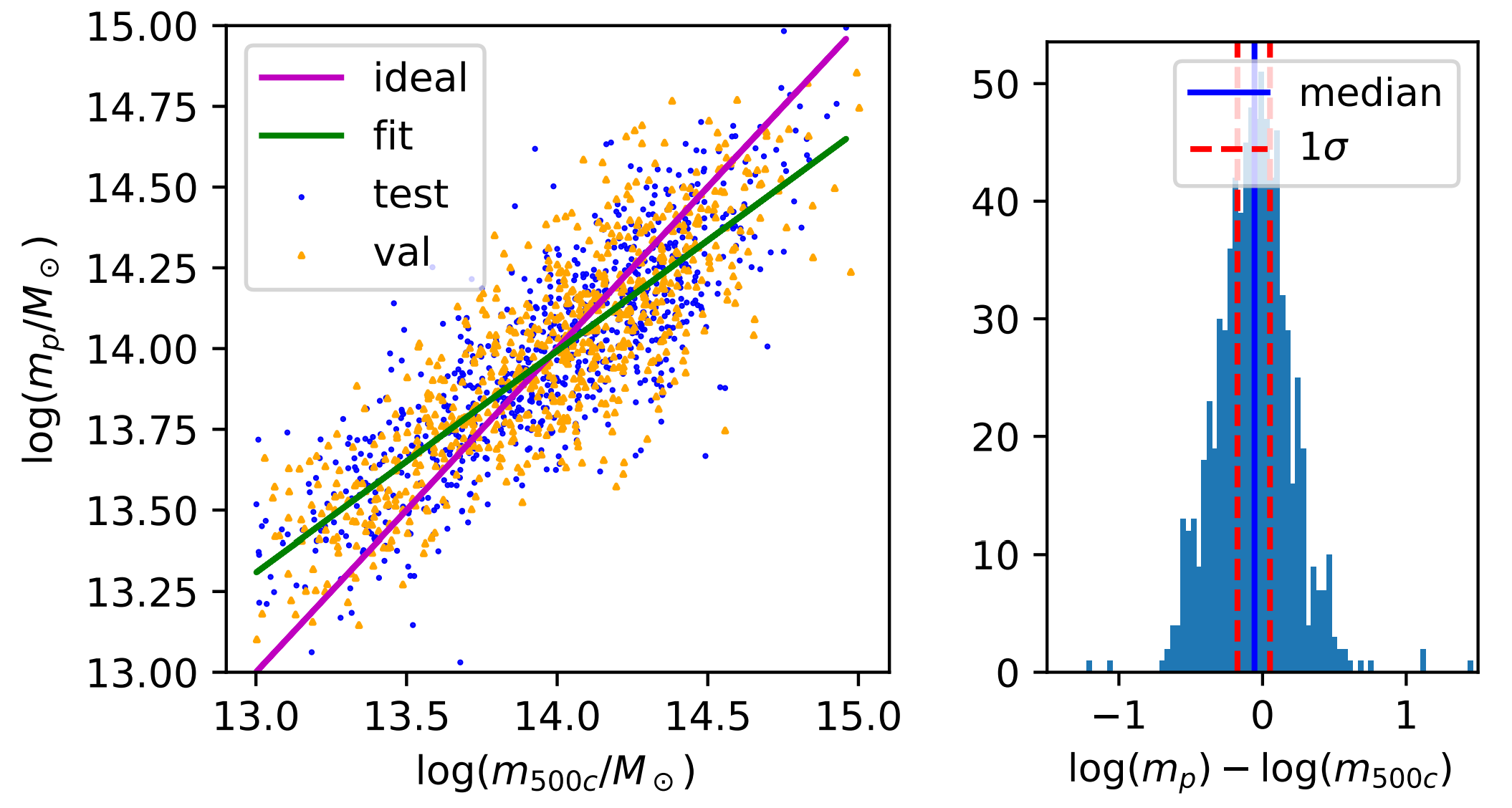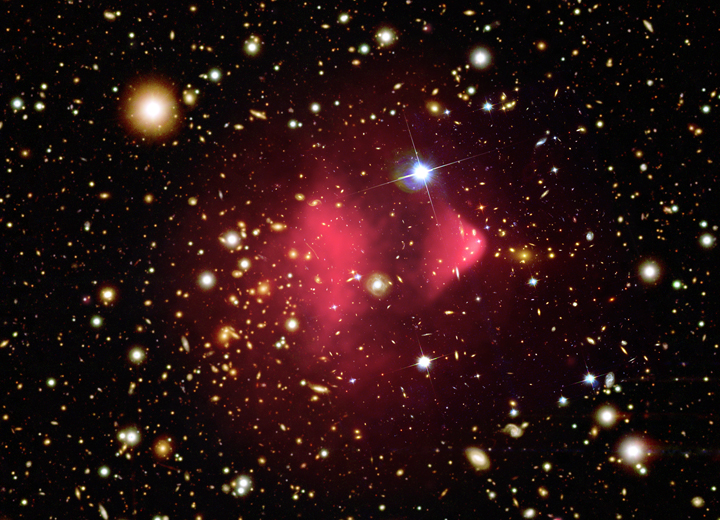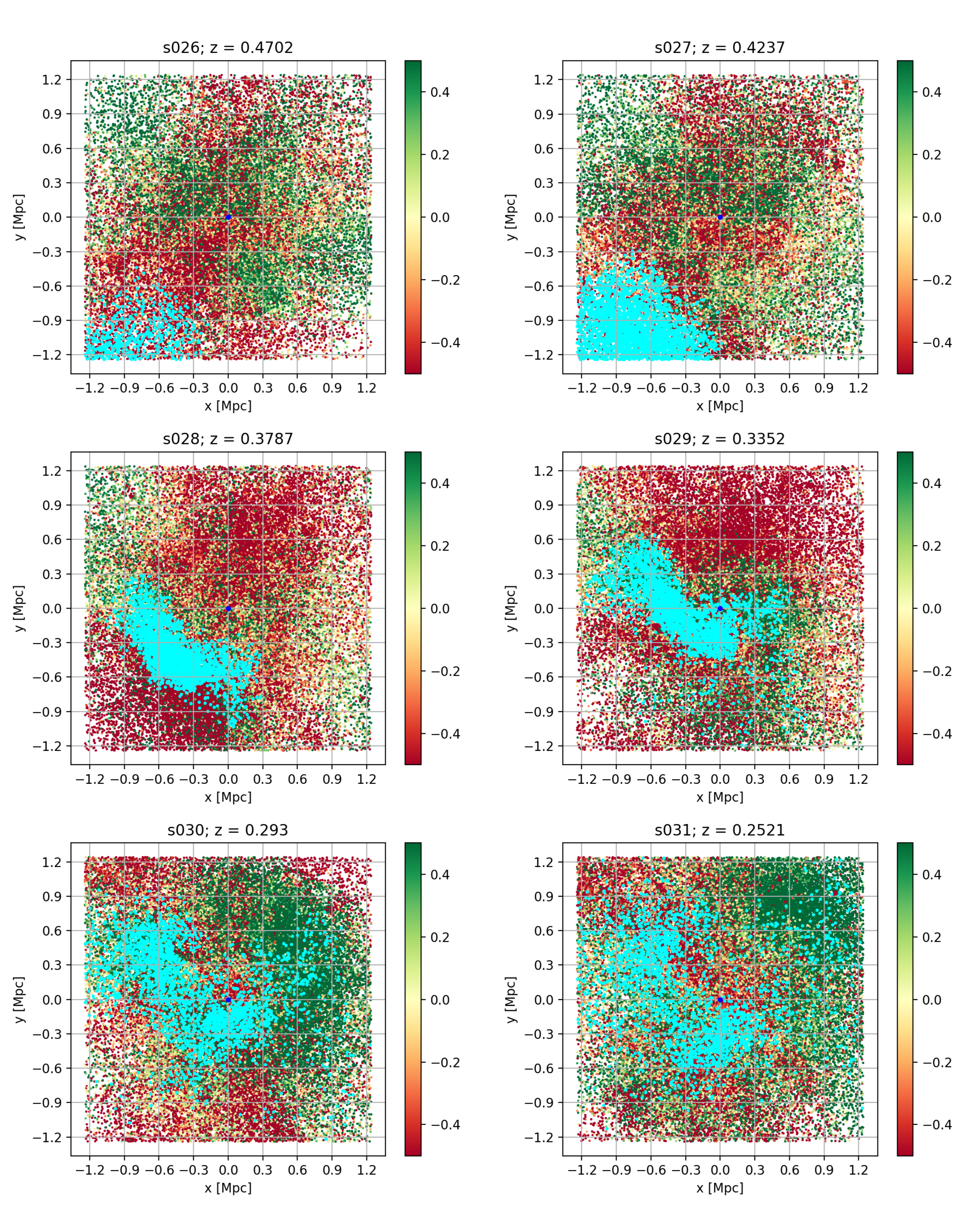Interests
Kinematics of Early Type Galaxies
Numerical simulations have shown, that early-type galaxies (ETGs) can be remnants of major mergers of spiral galaxies. Depending on the mass ratio and orbital parameters, like the orientation of the initial spins to each other or with respect to the orbital angular momentum, fast rotators or slow rotators are formed. Further investigations of velocity maps found more distinct features, which are listed here . One particular type shows prolate rotation, i.e. rotation around the major-axis of the galaxy's ellipsoid. This can be seen within one half mass radius of the galaxy seen below. This galaxy is found in the Magneticum Simulation.

Machine Learning and Neural Networks
Machine Learning and Artificial Intelligence are tools the can be used in various ways in science and will become increasingly more relevant. Neural Networks are a part of Machine Learning. A special kind are Convolutional Neural Networks, which are especially good at identifying structures in grid-like data like images. In Astrophysics this can be used to predict Galaxy Clusters Masses from X-Ray images like the three below, which were observed by eROSITA.

A neural network is then trained by taking a lot of similar images and their respective masses as an input through a process called back propagation. After takleing several complications like overfitting, finding the right loss function, and implementing an additional input, the clusters redshift, a network is able to predict masses of galaxy clusters it has not seen before. It is not perfect, as the figure below shows, but still very fascinating that this is possible.

Galaxy Clusters and their Hydrodynamics
For my bachelor thesis I caught up with the current research on merging galaxy clusters and got to know basic concepts of hydrodynamical n-body simulations. A famous example for a merging system is the so called "Bullet Cluster". In the image below one can see a accumulation of galaxys slightly to the left of the center of the image. These belong to the main cluster of the merging system. The subcluster galaxies are less obvious. But the gas of the ICM (Intracluster Medium) of both parts (represented by the red clouds, observed in X-ray) can clearly be seen. It is also possible to observe the strong shock fronts that are produced during such a extreme merger.

Credit: X-ray: NASA/CXC/CfA/M.Markevitch et al.; Optical: NASA/STScI; Magellan/U.Arizona/D.Clowe et al.
In my work I didn't observe merging galaxy clusters, like the people who produced the image above, but I looked at mergers in the cosmological hydrodynamical simulation, Magneticum, where many artificial but realistic galaxy clusters can be found and studied in detail.
Because all particle positions are known in the output of the simulation, one can, for example, track how gas particles move during the collision. This is visualized below. The colorbar represents the fraction the radial velocity of one particle while the cyan particles are tracked. z is the redshift and therefore represents the times evolution.

These are some aspects there are discussed in my bachelor thesis that can be found here.